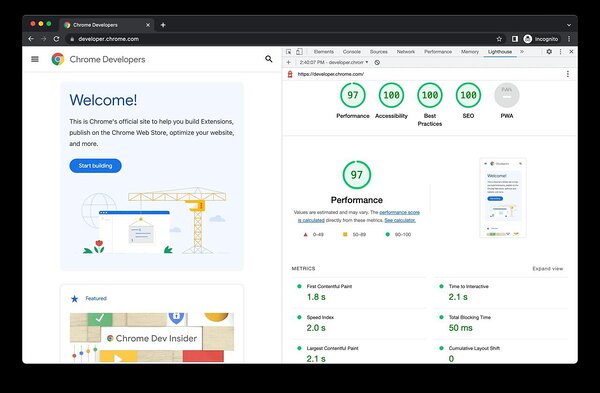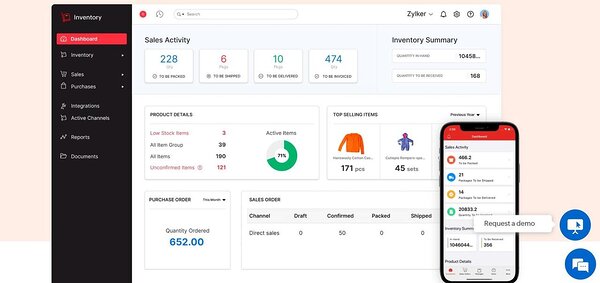eCommerce management goes way beyond setting up and managing an online shop. It aligns your eCommerce strategy with your primary business goals and involves everything from getting your product off the shelves to landing on customers' doorsteps.
Read on to discover exactly what eCommerce management entails, why you need a strategy, and some challenges you might face during implementation.
What is eCommerce management?
eCommerce management is a term used to describe all aspects of selling online, including UX design, marketing and communications and order management. Large enterprises may hire skilled professionals to carry out these activities, such as a web designer and digital marketing manager, plus salespeople and customer service agents. An eCommerce manager may lead the team and bring all activities together. In contrast, small eCommerce businesses may be run by just one person who wears many hats.
Key aspects of managing an eCommerce business
There's a lot to eCommerce management. It involves many responsibilities and tasks, including website management, marketing, inventory and order management and customer service. Let's look at the main areas in detail...
1. Website management and optimisation
The first step in this process is choosing the right platform to set up your online store. Two big players in the market are Shopify and BigCommerce. They don't just provide an online storefront; they're packed with features to help grow your business, such as powerful marketing and inventory management tools, app integrations, and dropshipping support. If you have a minimal budget, you could also build your own online store through Wix, WordPress, or similar DIY website builders.
Whatever route you choose, your store should be well-optimised for user interface (UI) and user experience (UX). These two design approaches go hand in hand. Good UI is about aesthetics—a beautiful, easy-to-use store layout with graphics, copy, and buttons in all the right places. Good UX ensures your store flows and functions seamlessly to deliver a superior user experience on all devices.
Some examples of good and bad UI and UX design:
*Poor UI - Lipton uses blurry product images in some product descriptions.*Good UI – graze has a clear, simple and eyecatching design.
*Poor UX - Shein has a cluttered hierarchy and many popup special offers, which are distracting. It's hard to find a specific product.
*Good UX - Apple showcases its products by category above the fold. It's easy to see the latest products or ask a specialist for help.
Website management also involves keeping your product catalogue up-to-date with accurate descriptions and detailed photos. (Only show products that are available in your inventory). You should also regularly refresh your website content so search engines can tell your store is active and relevant. As you'll be taking customer payments and capturing sensitive data, ensuring your site is continually maintained and secure is imperative.
Google's Lighthouse tool can be used to check website performance. It'll run a series of audits against your web pages and generate a report to help you optimise your store.
2. Marketing and communications
Alongside getting your store up and running, it’s essential to develop a digital marketing strategy to generate brand awareness and increase sales. It should include a range of channels, including email and SMS marketing, content marketing and social media. In addition to posting regularly on the social platforms where your audience hangs out, collaborate with influencers and get them to review your products to their followers. This can massively expand your reach.
You may have access to marketing tools within your eCommerce platform to help you implement activity effectively. Also, consider using:
A bulk SMS messaging service or automated texting system.
Social media scheduling websites, e.g., Hootsuite, Buffer or Canva.
Email automation software, e.g., Mailchimp or Sender.
Website analytics such as Google Analytics.
Tools like these can help you regularly review the effectiveness of your marketing, which is essential to success. You'll see what's resonating with your audience and which campaigns lead to conversions. Furthermore, monitor your customers' online activity (social listening) to catch any mentions of your brand and respond to them quickly, whether comments are good or bad. This will help strengthen your brand's online presence.
3. Customer acquisition and retention
New customer acquisition and customer retention are both major marketing goals. Activities in this area will need careful and ongoing management. They could include:
Setting up and managing a referral program with rewards for new and existing customers.
Designing and implementing a valuable loyalty program to encourage repeat purchases.
Creating discounted pricing strategies and publishing a range of marketing campaigns, including promotional messages, flash sales, new product launches and blog content.
Managing budgets and timescales for running paid social media marketing or search engine advertising designed to boost online visibility and increase web traffic.
4. Inventory management
Inventory management involves tracking stock levels and the movement of finished products or raw materials from manufacturers or suppliers to the warehouse or store. It's a crucial process in eCommerce management, helping to ensure customer orders are fulfilled efficiently and avoid stockouts or surplus stock taking up space.
What to do if you experience a stockout
Stockouts are bad news for your eCommerce brand, as they can lead to a poor customer experience and sales losses. However, they happen occasionally due to inaccurate demand forecasting and item counts, poor cash flow, logistical challenges, etc. There are various ways to deal with them, as follows:
Accept the order and then inform the customer that delivery will be delayed.
Temporarily remove the out-of-stock product from your catalogue.
Advertise the product as out-of-stock but suggest related items.
Allow customers to be notified when the product is back in stock.
Inventory management systems (IMS) can help with real-time stock monitoring, product categorisation, demand forecasting, automated reordering, inventory audits and supplier management.
5. Order management
Order management is the back-end process of tracking and fulfilling customer orders from the moment they're placed until they're delivered to the customer's doorstep. It includes processing payment, picking, packing, and despatching orders, deliveries, and refunds.
Being able to track orders in real-time is essential. Customers want and expect to know where their order is and how long they must wait to receive it. Your eCommerce business will also benefit from real-time order tracking, as you'll receive fewer customer queries, reducing admin time and freeing up service agents.
Order management software simplifies every step of the order journey and can help you deliver a positive customer experience at scale. Many solutions also offer efficient inventory management since the two processes are interconnected, as well as features like order capture and validation, pick, pack, and ship functionality, returns management and analytics.
6. Logistics
eCommerce logistics refers to how goods are obtained, stored and shipped to your end customers. It includes the following:
Warehouse management - how day-to-day operations are managed within your warehouse.
Shipping logistics - finding and managing a reliable courier or 3PL provider and then regularly evaluating and negotiating contracts.
Route optimisation - identifying the quickest and most cost-effective delivery routes.
Returns management - receiving and processing returns, inspecting returned goods and issuing refunds.
Packaging - sourcing the most efficient, affordable and environmentally friendly outer packaging.
Delivery tracking - with real-time updates for customers.
eCommerce logistics is a complex process, but the right software can help streamline and optimise all the aspects involved. Choose a solution that integrates with order and inventory management and has automation capabilities to reduce time and costs.
7. Customer service
A huge part of eCommerce management is ensuring customers are happy. To do this, your business should be available on multiple support channels, such as SMS, OTT messaging, email, live chat, and phone.
Anneli Eesmann, Messente's Head of Customer Support, explains how to leverage multiple channels to your business's advantage: "All channels need to be managed effectively so you don't miss any enquiries or issues raised by customers. A scalable customer relationship management (CRM) tool, with the right integrations, can centralise customer conversations, enabling fast responses and increasing satisfaction levels. Use email autosponders or automated SMS chatbots to supply answers to FAQs instantly. Also, take the time to train customer service agents on your software and equip them with accurate, up-to-date information about products, shipping, refunds and anything else customers may ask about."
The importance of an eCommerce management strategy
Intentional eCommerce management helps you standardise and streamline your selling approach online. It helps keep your store running efficiently and smoothly, driving decision-making and keeping your business at the forefront of cybersecurity and data protection compliance, e.g., through the protection of high-quality software solutions. Moreover, an eCommerce management strategy helps your eCommerce business meet (and even exceed) customer expectations since all aspects of selling are managed properly.
How to get started with eCommerce management
Your eCommerce management strategy should align with your business's vision, mission and overall objectives. It should also put your customers at its core, which means having a deep understanding of who your potential customers are and how to meet their needs.
Revisit your business plan and conduct a SWOT analysis to identify your brand's strengths, weaknesses, and market position. You may find that you've mastered product development but are experiencing inventory issues or aren't investing enough into marketing to get your goods flying off the shelves. Then do the following:
Set short-term and long-term eCommerce goals - consider what success looks like in six months, one year and five years.
Review processes and systems - and work on optimising the key areas mentioned above using the best software solutions you can afford.
Set budgets - allocate funds to the areas that need more investment and are most critical to sales and the customer experience. (Ensure you keep on track with spending too, so as not to impact your bottom line.)
Measure - continually monitor marketing campaigns and sales performance through relevant KPIs and metrics, e.g., conversion rate, customer acquisition cost, customer retention rate and customer satisfaction (CSAT) score.
Keep abreast of eCommerce trends in your market - so you can pivot and change direction if necessary.
Common eCommerce management challenges
Abandoned carts are one of the biggest challenges online businesses face. They can lead to lost sales and other damaging effects, such as inventory management and availability issues. One way to reduce cart abandonment is to tempt shoppers back via abandoned cart reminders. You should also simplify the checkout process, be transparent about shipping costs, and ensure your site is fast-loading and works as it should.
As highlighted earlier, stockouts or overstocking are also common issues. Poor demand forecasting and inefficient inventory control negatively impact online sales, profits, and customer loyalty. Utilise historical customer data, feedback, and market trends to estimate future demand more accurately, and implement IMS software to enhance your processes.
Other challenges include:
Returns management – this can be complex if you have little space for processing and storing returned products or are subject to returns fraud. There are ways to detect and prevent return fraud, i.e., through customer behavioural analytics and only offering credit refunds instead of cash.
Security concerns – eCommerce businesses and customers can become victims of phishing and social engineering attacks, malware infections, etc. Regular website maintenance is a must to prevent hackers from breaching your defences. You can also educate customers on what official communications from your store look like.
Technological advancements – if you want your eCommerce store to stand out, this means staying ahead of the curve and investing in digital transformation. Upgrading legacy systems can be costly and disruptive. Create a ring-fenced budget and put together a roadmap for implementation to help you do this at the right time.
Logistical issues – rising transportation costs, supply chain delays and damaged goods in transit are just a few examples. Effective route planning, strong supplier communication and robust packaging solutions can help.
Regulatory issues – along with data protection, another significant challenge is around consumer protection. You must provide clear and accurate product information, transparent pricing and refunds, and use secure payment gateways. The right eCommerce software solution can help with various aspects of legal compliance.
Optimise your online store via holistic eCommerce management
Effective eCommerce management helps you streamline operations and deliver excellent customer service. Your strategy should be central to your online business vision and aim to optimise aspects like online store design and UX, marketing, inventory and order management, logistics and customer relationship management.
Set goals for your eCommerce management strategy and review progress regularly to see what's working and what isn't. As all eCommerce brands do, you will encounter challenges along the way. However, as described above, there are ways to prevent or reduce problems such as abandoned carts, returns fraud, security breaches, and logistical issues.
Learn more about eCommerce management via our detailed guide on the best tools for eCommerce.










